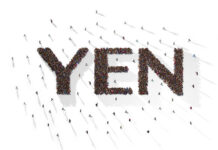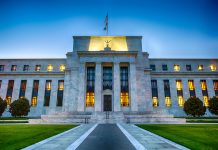Markets
The easing of tensions on bond markets remains a trading feature this week. We can’t really call It a comeback of core bonds, but they nevertheless are recouping some ground with positive eco and vaccination news by and large discounted. US Treasuries get some additional reprieve by the (one week) longer than usual break in between auctions. Next week could be a tougher nut to crack with 3-yr, 10-yr and 30-yr sales scheduled. US yields decline by 0.4 bps (2-yr) to 2.9 bps (7-yr) with the belly of the curve again outperforming the wings. Changes on the German yield curve are smaller, declining around 1 bp across the curve. 10-yr yield spreads vs Germany are unchanged with Greece and Italy slightly outperforming (-2bps). Minutes of the ECB meeting failed to inspire trading as they didn’t contain much new info. They provided some additional color to the European Central Bank’s decision to step up asset purchases under the Pandemic Emergency Purchase Programme in Q2. Optimism on financial markets as witnessed by reflation trades, wasn’t really shared by cautious European businesses and households. Therefore the ECB judged the move higher in yields as premature and an unwarranted tightening of financial conditions. Yesterday’s FOMC Minutes defended the, different, Fed view that higher yields deservedly so reflect economic optimism, firmer inflation expectations and higher Treasury debt issuance. US weekly jobless claims last week unexpectedly rose from 728k to 744k (vs 680k expected), but markets didn’t seem to notice it after upbeat March ISM’s and payrolls.
The Japanese yen and to a lesser extent swiss Franc are the main beneficiaries on FX markets from the ceasefire on bond markets. USD/JPY drops from 109.85 to the low 109 area. At the start of the month, the pair changed hands near 111. First support kicks in near 108.36/41. EUR/JPY drops from 130.50 towards 129.50 after yesterday failing to take out 130.67 (recovery top) resistance. A five-day decline in EUR/CHF accelerates with the pair about to test the 1.10 support mark. Amongst FX majors, the dollar isn’t enjoying his best day. Yesterday’s hard-worked for gains during the US session are evaporating. The trade weighted greenback is near the correction low of 92.14. The mirror image in EUR/USD is a feeble attempt to recapture the 1.19 handle. EUR/GBP for a second straight session tries to take out 0.8650 which would be a first sign that the sell-off in EUR/GBP could be up for a longer break.
News Headlines
In an interview with the FT, BoE policy member Tenreyro elaborated on the viability of negative interest rates. She advocated that the lower bound of (policy) interest rates is not an immutable number. According to Tenreyro, this lower bound is today much lower than 10y ago and even than last year. Amongst others, technological developments play a role in this process. She mentioned that the increased use of only payments during the pandemic and the declined use of cash had strengthened the potential effectiveness of negative interest rates. The cost of the inconvenience of holding/using cash money significantly outweighs the cost of small negative interest rates. Reopening the NIRP debate is currently no issue for GBP given the vaccination progress and lockdown reversals.
The Food and Agriculture Organization of the United Nations today reported that global food commodity prices recorded the tenth monthly increase in March. The FOA food price index averaged 118.5 points, rising by 2.1% versus February and reaching the highest level since June 2014. The rise was mainly driven by higher vegetable oil prices (8.0%). Dairy prices also increased (3.9% M/M) due to anticipation on recovery in the food services sector. Scarce shipping container availability in Europa and America also played a role. Meat prices rose 2.3%. The Cereal price index dropped 1.8% M/M but is still 26.5% higher than in March 2020. The FOA expects a rise in world cereal production this year. However, due to higher utilization, world cereal stocks are expected to decline 1.7% in 2021. This might cause the global cereal stock-to-use ratio to dip to 28,4%, a seven year low.












